Spatial updating in monkey superior colliculus in the absence of the forebrain commissures: dissociation between superficial and intermediate layers
- PMID: 20610793
- PMCID: PMC2944681
- DOI: 10.1152/jn.00675.2009
Spatial updating in monkey superior colliculus in the absence of the forebrain commissures: dissociation between superficial and intermediate layers
Abstract
In previous studies, we demonstrated that the forebrain commissures are the primary pathway for remapping from one hemifield to the other. Nonetheless, remapping in lateral intraparietal cortex (LIP) across hemifield is still present in split brain monkeys. This finding indicates that a subcortical structure must contribute to remapping. The primary goal of the current study was to characterize remapping activity in the superior colliculus in intact and split brain monkeys. We recorded neurons in both the superficial and intermediate layers of the SC. We found that across-hemifield remapping was reduced in magnitude and delayed compared with within-hemifield remapping in the intermediate layers of the SC in split brain monkeys. These results mirror our previous findings in area LIP. In contrast, we found no difference in the magnitude or latency for within- compared with across-hemifield remapping in the superficial layers. At the behavioral level, we compared the performance of the monkeys on two conditions of a double-step task. When the second target remained within a single hemifield, performance remained accurate. When the second target had to be updated across hemifields, the split brain monkeys' performance was impaired. Remapping activity in the intermediate layers was correlated with the accuracy and latency of the second saccade during the across-hemifield trials. Remapping in the superficial layers was correlated with latency of the second saccade during the within- and across-hemifield trials. The differences between the layers suggest that different circuits underlie remapping in the superficial and intermediate layers of the superior colliculus.
Figures

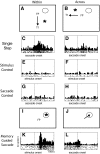
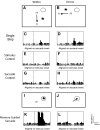





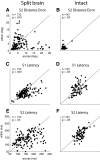

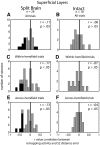
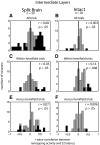
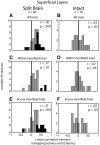
References
-
- Andersen RA, Asanuma C, Essick G, Siegel RM. Corticocortical connections of anatomically and physiologically defined subdivisions within the inferior parietal lobule. J Comp Neurol 296: 65–113, 1990 - PubMed
-
- Antonetty CM, Webster KE. The organization of the spinotectal projection. An experimental study in the rat. J Comp Neurol 163: 449–465, 1975 - PubMed
-
- Baizer JS, Bender DB. Comparison of saccadic eye movements in humans and macaques to single-step and double-step target movements. Vision Res 29: 485–495, 1989 - PubMed
-
- Basso MA, Liu P. Context-dependent effects of substantia nigra stimulation on eye movements. J Neurophysiol 97: 4129–4142, 2007 - PubMed
Publication types
MeSH terms
Grants and funding
LinkOut - more resources
Full Text Sources

